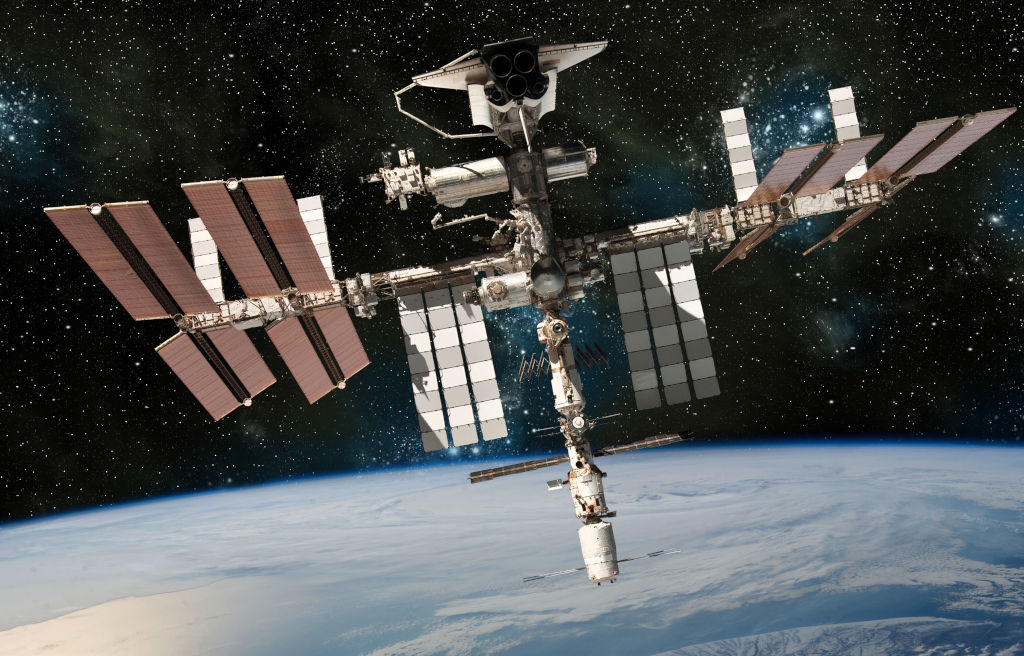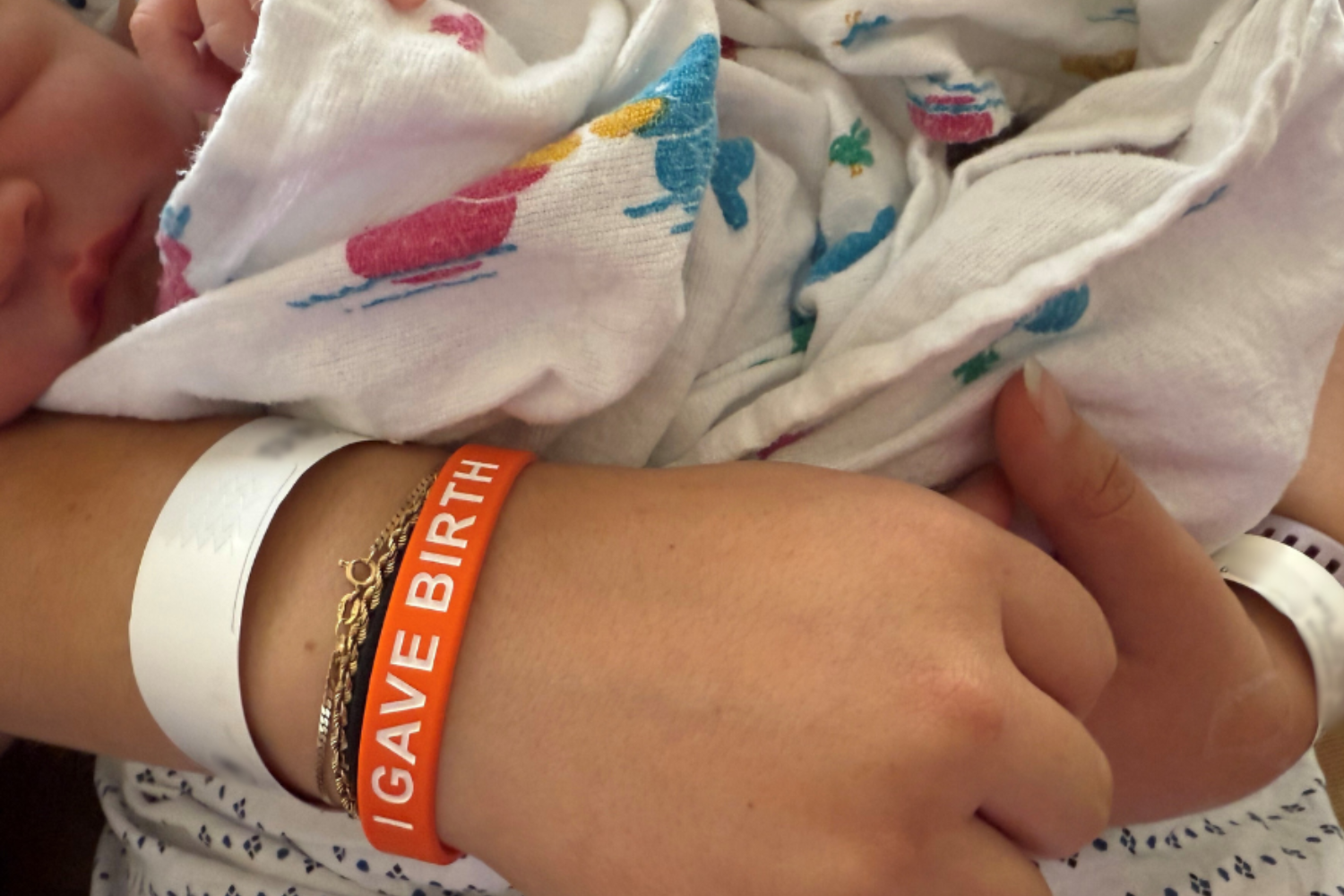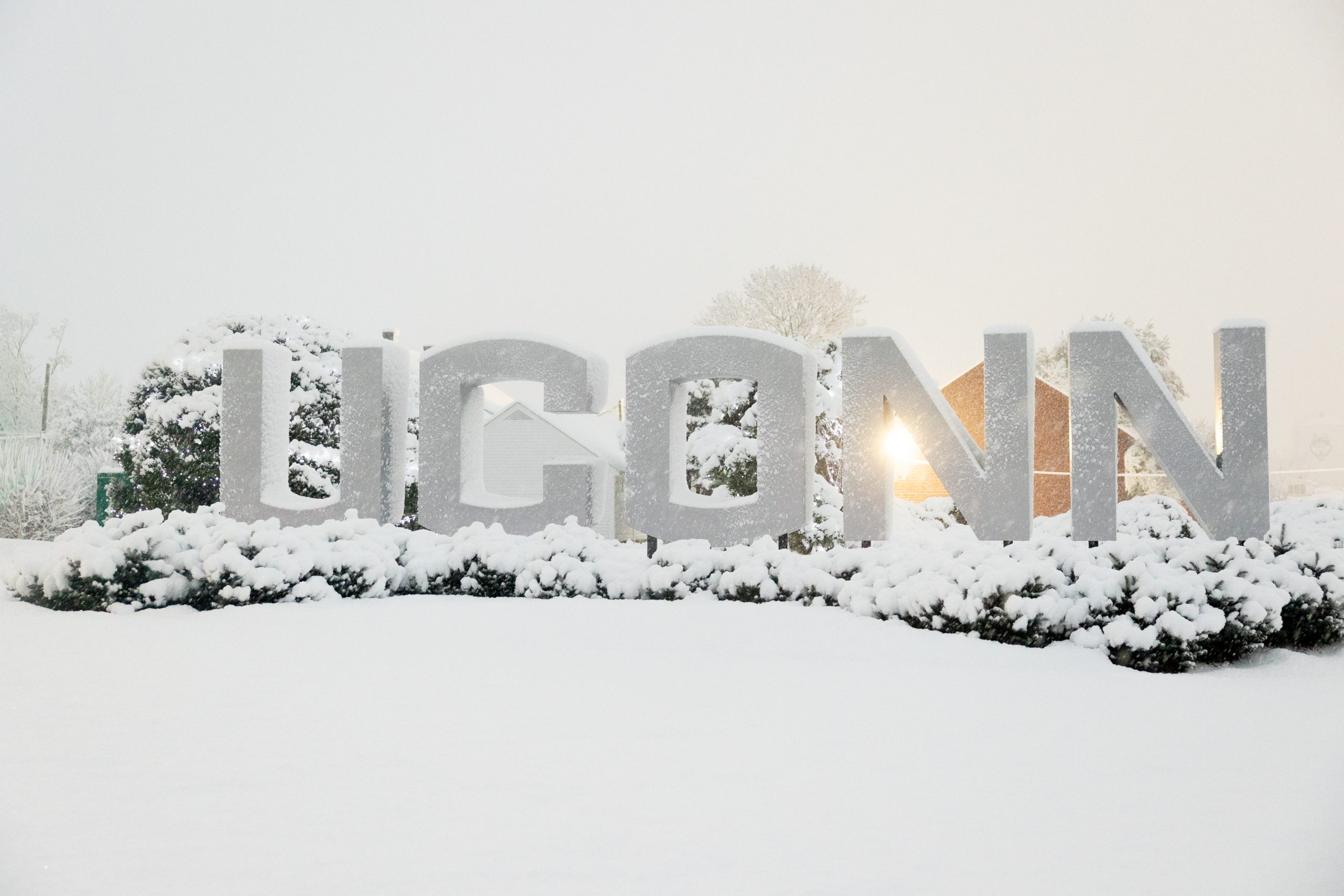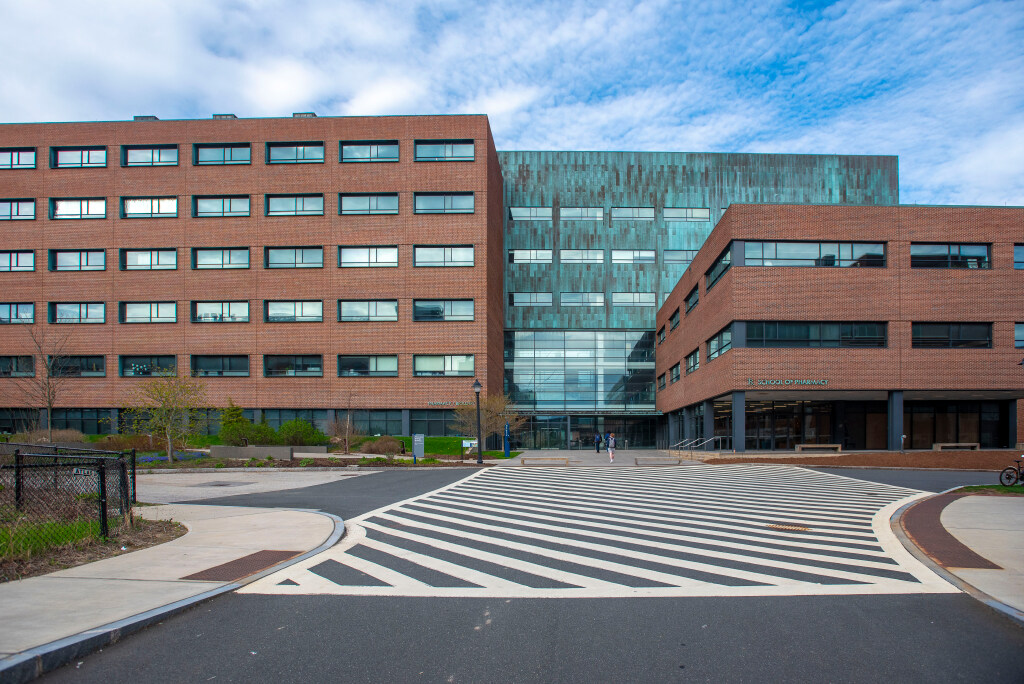On Friday, June 4th, the School of Engineering hosted a special presentation by alumnus and NASA astronaut Richard Mastracchio, who was joined by two retired Hamilton Sundstrand engineers, Donald Rethke (aka “Dr. Flush”) and Richard Wilde. The all-star event took place before a rapt audience of more than 300 people of all ages that included alumni as well as eager school children.
Fresh from his third and final shuttle mission aboard Discovery, Mr. Mastracchio (B.S. Electrical Engineering/Computer Science, ’82) returned to his alma mater to share anecdotes and insights about his experiences as an astronaut.
 Peppering his remarks with humorous anecdotes, Mr. Mastracchio summarized his career experiences, including how he joined the elite space corps: while he was working at NASA’s Flight Crew Operations Directorate and living in Houston area, he said, his wife saw an application in the newspaper and urged him to apply. He kept the application in a drawer for more than a year before finally completing and sending it in.
Peppering his remarks with humorous anecdotes, Mr. Mastracchio summarized his career experiences, including how he joined the elite space corps: while he was working at NASA’s Flight Crew Operations Directorate and living in Houston area, he said, his wife saw an application in the newspaper and urged him to apply. He kept the application in a drawer for more than a year before finally completing and sending it in.
His career as a shuttle astronaut began in 2006, and since that time, he has flown three shuttle missions to the International Space Station (ISS). He said that the three missions allowed him to see the progress aboard the ISS as it was transformed across multiple shuttle and Soyuz missions from a somewhat cramped station into a spacious multi-module installation equipped with experimental laboratories, ample storage and living spaces for space-bound residents from different nations for six months apiece.
With a handsome NASA-produced “home movie” depicting highlights of his latest shuttle flight, Mr. Mastracchio described the unique experiences of takeoff, docking with the ISS after whizzing around the Earth at 17,500 miles/hour, living and working in the zero-g atmosphere aboard the ISS, and the challenges of replacing external tanks and other maintenance while wearing a space suit. The video depicted the astronauts at intervals throughout the entire mission, both aboard the shuttle and ISS, as they experienced strong vibrations during liftoff, strapped themselves into their sleeping bags, conducted experiments, exercised, ate meals and carried out extravehicular activities and repairs. Among the most compelling was footage showing astronauts insert an M&M and a salted cherry blossom into globular spheres of water floating in the cabin. Mr. Mastracchio explained that water’s surface tension holds it together in zero-g.
The next portion of the program centered on reminiscences by Richard Wilde and Donald Rethke, who as Hamilton Sundstrand engineers played prominent roles in the Apollo program. Mr. Wilde led the system integration and certification of the U.S. spacesuit for use aboard the space shuttle and, subsequently, the International Space Station. But in 1970, when a series of catastrophic failures crippled Apollo 13, he was Chief Systems Engineer for the lunar module (LEM) life support system. His remarks focused on the vital role Hamilton Sundstrand engineers played in saving the crew of James Lovell, John “Jack” Swigert and Fred Haise.
He described the taut situation that unfolded when critical oxygen tanks aboard the Apollo 13 command module ruptured, forcing the crew to move into the LEM, which he dubbed their “lifeboat.” The lifeboat had its own problems, he noted, notably that its life-support system, which was designed by Hamilton Standard, was meant to accommodate two men for two days, not three men.
 CO2 levels were rising in the LEM, and the three astronauts were at risk for suffocation if the problem couldn’t be resolved. Mr. Wilde said the problem involved hooking up two life-support systems that were never meant to be linked — one with a square outlet, the other a round outlet.
CO2 levels were rising in the LEM, and the three astronauts were at risk for suffocation if the problem couldn’t be resolved. Mr. Wilde said the problem involved hooking up two life-support systems that were never meant to be linked — one with a square outlet, the other a round outlet.
Shortly after Mission Control fully realized the catastrophic nature of the failure, he said, NASA flight director Gene Krantz ordered all of Hamilton Sundstrand’s space engineers to work on the problem. The engineers had just 24 hours to design and test a coupling that could be assembled from materials aboard the spacecraft. Armed with slide rules and ingenuity, he said the team devised and tested what it called the “mailbox solution” fashioned from plastic film, hose and duct tape to prevent the build-up of carbon dioxide. “Don (an expert in life support systems and space suits for the Apollo and later space programs) confirmed the system would work.”
Equipped with a model of a space suit as a prop, retired Hamilton Sundstrand engineer Mr. Rethke spoke briefly about the complex space suits and life support backpacks he helped to design for the Apollo and later space programs. He noted that the Apollo astronauts were forced to leave their backpacks on the moon to accommodate the important lunar samples they were transporting back to Earth.
The three then fielded audience questions, many from the school children and teachers attending the event. At the conclusion, admirers of all ages flocked to the stage for autographs and photos with the engineers, heroes of the NASA and shuttle programs.
Early in the program, Dean of Engineering Mun Choi joined Mr. Mastracchio in presenting two pennants that accompanied him aboard Discovery. With his parents beaming proudly in the audience, new Computer Engineering graduate (2010) Rockwell Shrock received one of the well-traveled pennants: a slim piece of cloth depicting his novel design, which was the top vote-getter in a school-wide competition held in the fall. The second pennant, sporting Jasper’s number 6 and the words “Husky Forever: in Memory of Jasper Howard,” was presented to UConn Athletic Director Jeff Hathaway and a group of UConn football players in memory of cornerback Jasper Howard.



